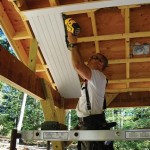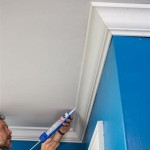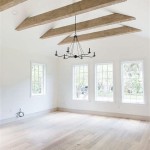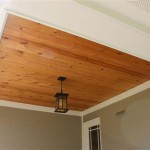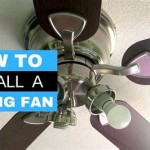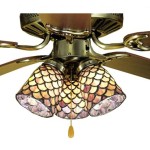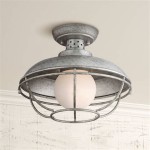Best Quiet Ceiling Fans in Singapore
The climate in Singapore necessitates effective and efficient cooling solutions for residential and commercial spaces. While air conditioning is prevalent, it often leads to high energy consumption and can contribute to environmental concerns. Ceiling fans offer a sustainable and economical alternative, providing comfortable airflow and reducing reliance on air conditioning systems. However, a common complaint associated with ceiling fans is noise. This article explores the best quiet ceiling fans available in Singapore, focusing on models that prioritize silent operation without compromising performance and aesthetics.
The selection criteria for quiet ceiling fans include several key factors. Firstly, the motor type plays a crucial role. DC (Direct Current) motors are significantly quieter and more energy-efficient than traditional AC (Alternating Current) motors. Secondly, blade design influences airflow and noise levels. Aerodynamically optimized blades that minimize air turbulence contribute to quieter operation. Thirdly, build quality and materials impact the overall stability and noise generated by the fan. Fans constructed with durable materials and precise engineering tend to operate more quietly. Finally, features such as remote control functionality, light integration, and smart home compatibility enhance user convenience and contribute to the overall value of the fan.
Key Point 1: The Superiority of DC Motors for Quiet Operation
DC motors represent a significant advancement in ceiling fan technology. Unlike AC motors, which rely on alternating electrical current, DC motors utilize direct current, resulting in smoother and more efficient operation. This translates to several advantages, particularly in noise reduction. DC motors typically feature multiple speed settings, allowing for finer control over airflow and minimizing the likelihood of excessive noise at higher speeds. The design also contributes to improved energy efficiency, potentially reducing electricity bills over the long term. Many modern ceiling fans incorporating DC motors are significantly quieter than their AC counterparts, making them ideal for bedrooms, living rooms, and other noise-sensitive environments.
The reduced vibration associated with DC motors also contributes to their quiet operation. AC motors often produce a noticeable hum or buzzing sound due to the alternating current cycle. DC motors, with their smoother and more consistent operation, minimize these vibrations, resulting in a nearly silent experience. Furthermore, DC motors are typically smaller and lighter than AC motors, which can contribute to a more streamlined and aesthetically pleasing fan design.
The long-term benefits of investing in a ceiling fan with a DC motor extend beyond noise reduction. The increased energy efficiency translates to cost savings, and the improved durability of DC motors often leads to a longer lifespan compared to AC motor fans. While the initial investment may be higher, the long-term value proposition makes DC motor ceiling fans a worthwhile choice for those seeking a quiet and efficient cooling solution in Singapore.
Key Point 2: Blade Design and Material for Optimal Airflow and Minimal Noise
The design and material of the fan blades significantly impact its airflow efficiency and the noise it generates. Aerodynamically optimized blades are engineered to minimize air turbulence, reducing the whooshing sound commonly associated with ceiling fans. These blades often feature curved or angled shapes that allow air to flow smoothly across their surface. The number of blades also plays a role; fans with fewer blades can sometimes be quieter, although the specific design is more important than the number alone.
The materials used in the construction of the blades also affect noise levels. Lightweight materials such as ABS plastic are commonly used in modern ceiling fans. High-quality ABS plastic is durable and resistant to warping, which can contribute to unwanted noise. Wood blades, while aesthetically pleasing, can sometimes be heavier and potentially generate more noise if not properly balanced. Metal blades are typically reserved for industrial or outdoor applications due to their durability and resistance to the elements, but they can be noisier than plastic or wood blades.
Blade pitch, the angle at which the blades are set, also plays a critical role in airflow and noise. An optimal blade pitch ensures that the fan moves a sufficient amount of air without creating excessive turbulence. Manufacturers invest significant research and development efforts into designing blades that strike the right balance between airflow, noise reduction, and energy efficiency. Some fans feature blades with a unique surface texture or design elements that further minimize air resistance and noise.
Key Point 3: Build Quality, Installation, and Maintenance for Silent Performance
The overall build quality of a ceiling fan significantly influences its noise levels. A well-constructed fan with tight tolerances and secure connections will operate more quietly than a poorly made fan with loose components or flimsy materials. The motor housing should be robust and well-insulated to minimize vibrations and noise. The mounting system should be designed to securely attach the fan to the ceiling, preventing wobbling or rattling that can contribute to unwanted noise.
Proper installation is crucial for ensuring quiet operation. A qualified electrician should install the fan according to the manufacturer's instructions. Incorrect installation can lead to imbalances, loose connections, and other issues that can generate noise. The ceiling junction box should be sturdy and capable of supporting the weight of the fan. Using a balancing kit can help to address any minor imbalances that may occur after installation.
Regular maintenance is essential for maintaining the quiet performance of a ceiling fan. Dust accumulation on the blades and motor can contribute to imbalances and noise. Periodically cleaning the blades with a soft cloth or duster can help to prevent dust buildup. Tightening any loose screws or connections can also address potential sources of noise. Lubricating the motor bearings, if applicable, can further reduce friction and noise. Following the manufacturer's maintenance recommendations can help to prolong the lifespan of the fan and ensure its continued quiet operation.
Beyond the core aspects of motor type, blade design, and build quality, other factors contribute to the overall user experience and noise level of a ceiling fan. Remote control functionality provides convenient control over fan speed and light settings. Some fans offer smart home integration, allowing users to control the fan via voice commands or smartphone apps. Light integration can eliminate the need for separate lighting fixtures, simplifying the overall design of a room. When selecting a ceiling fan, it is important to consider these additional features and how they align with individual needs and preferences.
Choosing the right ceiling fan involves careful consideration of various factors to ensure quiet operation and optimal performance. By prioritizing DC motors, aerodynamic blade designs, and high-quality construction, it is possible to find a ceiling fan that provides comfortable airflow without generating excessive noise. Proper installation and regular maintenance are also crucial for maintaining the quiet performance of the fan over its lifespan. In the context of Singapore's climate, selecting the ideal ceiling fan provides an energy-efficient and comfortable cooling solution that minimizes noise pollution.
Specific brands and models known for their quiet operation often incorporate the aforementioned design elements. Researching customer reviews and product specifications can provide valuable insights into the noise levels and overall performance of different ceiling fan models. Comparing features, warranty information, and pricing can help to make an informed decision that aligns with individual requirements and budget constraints. Consulting with lighting and fan specialists can also provide expert guidance and recommendations based on specific room sizes, ceiling heights, and aesthetic preferences.

Top 8 Best Ceiling Fan Brands In Singapore 2024 Yeobuild Home

Choosing The Right Ceiling Fan With Lights 10 Factors To Consider For Prism

13 Most Recommended Ceiling Fan Models In Singapore Mr Vu

10 Best Ceiling Fan Singapore Bladeless Fans With Light

Home Fanco

13 Most Recommended Ceiling Fan Models In Singapore Mr Vu

Top 8 Best Ceiling Fan Brands In Singapore 2024 Yeobuild Home

10 Best Ceiling Fan Singapore Bladeless Fans With Light

13 Most Recommended Ceiling Fan Models In Singapore Mr Vu

10 Best Ceiling Fan Singapore Bladeless Fans With Light
Related Posts

